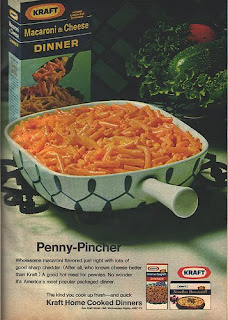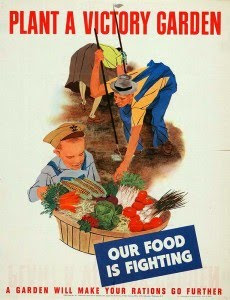We are entering our week 33rd of the rationing project. Week 33! Can you believe it?
This means for 33 weeks our menus and shopping trips have been affect by the amazing
Mr. Bowles' Amazing Marketplace Scenario Randomizer. For those who really like data, here's a list of all the scenarios we endured (and a few comments in red)...
Week 1:No scenarios
(we were being nice to ourselves)Week 2:Salad oils - none available for purchase
Frozen fruit - scarce, available only for 1.5 times the regular ration points
Processed meats - only substandard quality available
(off-brand)Week 3:Processed meats - none available for purchase
Coffee - only half the normal amount available
Week 4:Beef - only half the normal amount available
(so if a recipe called for 1 lb of beef, we could only buy a half lb)Coffee - ditto
Canned fruit - scarce, available only for 1.5 times the regular ration points
Dried fruit - ditto
Week 5:Canned soups and sauces - only half the normal amount available
Week 6:Eggs - none available for purchase
Canned vegetables - scarce, available only for 1.5 times the regular ration points
Week 7:Alternative sweeteners (corn syrup, maple syrup, honey, molasses) - only substandard quality available
(off-brand)Canned soups and sauces - surplus, available for half of the normal ration points
(bought extra tomato sauce and tomato soup)Week 8: (our first week with five scenarios!)Pork - none available for purchase
Processed meats - only half the normal amount available
Poultry - scarce, available only for 1.5 times the regular ration points
(we had company over for dinner and already had chicken on the menu for the event, so we paid copious points for that particular dinner)Salad oils - surplus, available for half of the normal ration points
Coffee - only substandard quality available (store brand)
Week 9:Beef - only half the normal amount available
Fresh vegetables - ditto
Canned fruits - Victory Special! Available for 1/4 the normal ration points
(Our first Victory Special! Bought extra cans of fruit)Nuts and nut products - none available for purchase
(very happy that we had an extra jar of peanut butter on the shelf)Poultry - surplus, available for half of the normal ration points
Week 10:Beef - Victory Special! Available for 1/4 the normal ration points
Salad Oils - ditto
Sugar - only half the normal amount available
Canned vegetables - scarce, available only for 1.5 times the normal ration points
Week 11:Butter - scarce, available only for 1.5 times the normal ration points
Salad oils - surplus, available for only half the normal ration points
Soft cheeses - scarce, available only for 1.5 times the normal ration points
Beef - ditto
Week 12:Butter - none available for purchase
Poultry - only substandard quality available
(off-brands, lower-quality cuts...really wanted fried chicken that week so had to use only off-brand chicken legs...bleh)Week 13:No scenarios
(first time in three months!)Week 14:Shortening - surplus, available for only half the normal ration points
Salad oils - scarce, available only for 1.5 times the normal ration points
Pork - ditto
Week 15:Pork - scarce, available only for 1.5 times the normal ration points
Shortening - only half the normal amount available
Sugar - scarce, available only for 1.5 times the normal ration points
Beef - surplus, available for only half the normal ration points
Week 16:No scenarios
Week 17:No scenarios
Week 18:Poultry - none available for purchase
Week 19:No scenarios
(we could get used to this - three out of the last four weeks!)Week 20: (reality check)Flour - only half the normal amount available
Eggs - none available for purchase
(lucky to get eggs in our CSA bag that week)Beef - scarce, available only for 1.5 times the normal ration points
Nuts and nut products - none available for purchase
(umm...haven't been stocking up so we're out)Week 21:No scenarios
Week 22:Soft cheeses - only half the normal amount available
Butter - only substandard quality available
Frozen fruit - surplus, available for only half of the normal ration points
(for some reason we didn't stock up)Dried fruit - only half the normal amount available
Frozen vegetables - none available for purchase
Week 23:Dried beans - scarce, available only for 1.5 times the normal ration points
Canned vegetables - ditto
Week 24:No scenarios
Week 25:Beef - none available for purchase
Pork - scarce, available only for 1.5 times the normal ration points
Frozen juice - ditto
Grains - only half the normal amount available
Coffee - none available for purchase
Week 26: (Yay! Passing the halfway point!)Butter - none available for purchase
Jams/jellies - Victory Special, available for only 1/4 the normal ration points
(we didn't take advantage of this since we have home-canned jam)Hard cheeses - none available for purchase
Week 27:No scenarios
Week 28:Frozen fruit - scarce, available only for 1.5 times the normal ration points
Dried fruit - only substandard quality available
Hard cheese - none available for purchase (oh dear, getting low on hard cheese...)
Salad oils - scarce, available only for 1.5 times the normal ration points
Poultry - only half the normal amount available
Week 29:Coffee - none available for purchase
Cottage cheese - only substandard quality available
Salad oils - none available for purchase
Week 30:Eggs - only half the normal amount available
Shortening - ditto
Beef - ditto
Pork - scarce, available only for 1.5 times the normal ration points
Week 31:No scenarios
Week 32:Pork - only half the normal amount available
Salad oils - scarce, available only for 1.5 times the normal ration points
Butter - ditto
Week 33:Salad oils - none available for purchase
(dang! salad oils have been restricted/none available for the last several weeks and we need more olive oil for pesto supplies)Flour - none available for purchase
Whew! There you have it. I think we've rolled with the punches pretty well. In general, we've learned that there are certain items that we always want to have an extra supply on hand of: butter, sugar, flour, oils, hard cheeses and peanut butter. Everything else is just bonus.
A quick review of our records show that the average number of dinners where meat is a main component hasn't changed from the first eight weeks of the program as compared to the previous eight weeks; we still have meat-based dinners an average of 2.75 times per week.
Okay, that's enough of a trip down memory lane for now. How do you think you'd handle the Randomizer?
--Rational Mama
 What we do have is macaroni and cheese. Kraft's iconic blue box dinner was a new and popular dining option during WWII rationing. Two boxes of macaroni and cheese only cost one red point, which means it was (and is) a very popular vegetarian meal.
What we do have is macaroni and cheese. Kraft's iconic blue box dinner was a new and popular dining option during WWII rationing. Two boxes of macaroni and cheese only cost one red point, which means it was (and is) a very popular vegetarian meal.






